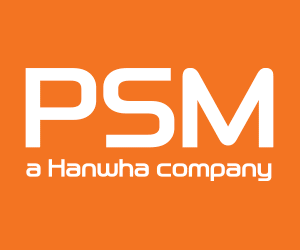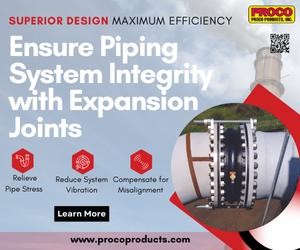Powerplant work can be lonely, particularly when you’re employed at a combined-cycle plant where the total headcount might only be a couple of dozen folks, even for a 2 × 1 advanced-class unit. “Thin” staffing takes on a new meaning these days, especially when only a few employees have a decade or more of relevant gas-turbine experience. Include the staff’s level of knowledge on steam turbines, HRSGs, and generators and a plant manager could have nightmares.
When questions arise, whom do you call? If the owner is a relatively small IPP with, say, fewer than a dozen engines, there’s probably no support staff. Logically, the OEM should be able to help. But what if you have an Alstom engine? The original manufacturer is gone, along with many of the engineers with deep knowledge of the machine.
1. 2020 Conference
January 27 – 31 Magnolia Hotel Houston
1100 Texas Ave
Houston, Tex 77002
Details/registration at aogusers.com
Conference organized by Jeff ChapinSteering committee
Brian Vokal, Midland Cogeneration Venture
Chris Hutson, Georgia Power
Robert Bell, Tenaska Berkshire Power
Pierre Ansmann, Arnold Group
Jeff Chapin, Liburdi Turbine Services
This scenario is what led to the formation of the Alstom Owners Group (AOG). It’s a self-help organization that brings plant O&M personnel together with third-party service providers to share engine knowledge and develop the solutions necessary to maintain the high levels of reliability and availability required to keep generating plants competitive in today’s cutthroat power market.
If your facility has Alstom rotating equipment, consider attending the AOG’s third annual meeting, January 27-31, in Houston. This article provides information that can help you make an informed decision. The main text highlights some of the material disseminated by users and vendors at the 2019 meeting last February; Sidebars 1 and 2 provide information on the 2020 conference and the AOG organization, Sidebar 3 offers a preliminary list of presentations for the upcoming meeting, and Sidebar 4 identifies two dozen services providers that already have committed to participating in the 2020 conference.
2. About the AOG
If you’re an owner/operator of Alstom-manufactured steam and gas turbine/generators—or a provider of products and/or services for that equipment—and are not familiar with the Alstom Owners Group, please read on.
AOG, as the industry’s newest user group is known, will host its third annual conference Jan 27 – 31, 2020 at the Magnolia Hotel in Houston, Tex. The vacuum created by sale of Alstom to GE has left many owner/operators scrambling for parts and service. This is an excellent opportunity for you to gauge the impact of the industry shakeout on your supply chain and share experiences with Alstom turbine owners from all over the world.
Register now for the conference at https://aogusers.com. The fee is a very affordable $300 to glimpse the changes important to your plant’s profitability first-hand.
Here are some important things for you to know:
- AOG is managed and supported by owners of Alstom equipment for owners of Alstom equipment.
- User-to-vendor ratio for the first two meetings was better than 3:1.
- Innovative format allows multiple days to discuss your plant problems/solutions with colleagues and to meet with suppliers of interest in a relaxed setting.
- Includes limited participation by the OEM and a select group of highly respected third-party parts and services providers.
- An owners-only open forum, allowing users to discuss confidential topics in private.
- The previous bullet point aside, AOG is a truly transparent event where solutions providers are welcome to attend all presentations and training sessions, and to participate in the conference tour of Doosan Turbomachinery Services shop facilities.
- Multiple training sessions/workshops are included in the conference registration fee.
User presentations
The most important aspect of any user-group meeting is the sharing of information among owner/operators without the presence of suppliers. At the 2019 conference, users convened for the last few hours of Day One to discuss issues, experiences, and concerns pertinent to the Alstom fleet. More than 50 owner/operators participated, about half of whom did not attend the first meeting in 2018.
Open forum. Chris Hutson of Georgia Power, along with Brian Vokal and Dan Tenbusch of Midland Cogeneration Venture took the lead in orchestrating and stimulating a valuable open exchange of information. What follows are some of the frustrations vented, experiences and best practices shared, and user wants and needs. The session got rolling with attendees expressing dissatisfaction with the way GE manages drawings and documentation. Examples given included long lead times, quoting delays, notifications not applicable to site, etc.
A major concern noted was that the loss in technical knowledge of Alstom engines has been incredibly deep. So much so that an attendee said his company was going in the direction of “What can we get reverse engineered?” Another user asked, “How is GE managing the supply chain?”
Burners for supplementary-fired HRSGs were introduced into the discussion. Recall that Alstom was one of the major suppliers of heat-recovery steam generators for combined-cycle systems before its demise. The participant said one of his plant’s burners revealed a great deal of distortion during a gas-side inspection of the unit. Plant had an extra burner and sent it to Liburdi, which fabricated a new one and had it back to the site in four days. That solution surprised many in the room.
Controls strategy received some interest. “Do you stick with ABB or go with a third-party alternative?” A recommendation made was to pull all PLCs into the control system so if a control-system upgrade is necessary five or six years down the road, it will be easier. One user touted Emerson’s success in plants with Alstom equipment. Specifically, he said, Ovation was installed on eight GT11NM engines at his facility.
A question from the podium to the group: “What issues/equipment would you like to understand better?” Most responses were general in nature, including the following: variable inlet guide vanes, exhaust cracking, inner liners, burners, gas detection, generator inspections, fire suppression, retrofitting of solenoids, parts trading. . . . The list certainly gave members of the steering committee ideas for presentations at upcoming meetings.
No matter what user-group meeting you attend, the varnish issues likely will be factored into the discussion. At AOG 2019, lint-free rags were suggested for cleaning of lube-oil tanks, recommendations included taking oil samples monthly and stroking valves weekly. Users voiced their opinions on which varnish-removal system they thought most effective.
Other topics introduced and discussed to varying degrees included the following:
-
- What to do about a CO catalyst at risk of mechanical failure?
- ABB breakers and starters. How do you retrofit a 480-V generator breaker because of obsolescence?
- LCI issues came next. Lightning damaged P800 and P800-5 parts which are proving difficult to find. Without them, you can’t put the unit back in service. Suggestions?
- What are the advantages of upgrading EHC controllers for gas valves?
- Can you rebuild NOx water pumps?
- How do you avoid issues with your fuel-oil system—fuel transfer, etc?
- What upgrades to you suggest for generator circuit breakers?
- Acoustic monitoring for PD: Is it effective?
- Units tripping on high vibration. What to do?
- What’s the group’s experience with third-party suppliers?
Best practices for managing employee attrition. Brian Vokal, general manager of Midland Cogeneration Venture, a very large cogen facility with 12 gas turbines and HRSGs and one repowered steam turbine from a retired nuclear project, presented on managing his workforce in terms of retirees, recruiting, training, and retention. Staff totals 121 O&M and administrative personnel.
By way of background, the facility experienced very low turnover until 2013 when the average age was 50 and plant tenure averaged 20 years. In 2013 there was 35% attrition. Fast forward to 2019, 40% of the staff has fewer than six years of experience.
Lessons were learned, the speaker said. He suggested the following:
-
- Identify people who will retire.
- Analyze job responsibilities for all positions.
- Develop a recruiting plan.
- Create a plan for knowledge transfer.
- Develop an in-house training program.
- Manage employee retention.
Optimization of major maintenance through better planning and execution. With oil prices falling, the speaker’s company was seeking avenues for cost savings. This user’s experience is that major maintenance accounts for half of a plant’s O&M expenditures and half of that goes for parts refurbishment. Here’s what he suggested to drive down costs:
-
- Evaluate purchase versus refurbishing of major capital parts, taking into consideration parts-life extension and outage-interval extension. If you don’t have a parts tracking database, get one.
- Review and update your repair quality-management process, including repair standards, scope customization, and cost and quality validation.
- Requalify repair facilities—especially regarding experience level and engineering processes. Turnover can adversely impact repair quality as can shortcuts that may have crept into procedures to reduce costs.
3. Presentations already accepted for AOG 2020
Vetting by the steering committee of presentations recommended by users and vendors for AOG 2020 is a work in progress and likely will continue into December. Below are abstracts of some presentations already accepted for the conference. Program updates will be posted online.
Tuesday keynote
Jeff Henry, president, ATC-CES Inc, one of the world’s leading authorities on advanced alloys for high-temperature/high-pressure steam service, will update the group on Grade 91 experience in nuclear and fossil plants. Henry, who spent more than 30 years with Alstom Power, focuses his professional time today on the behavior of materials at high temperature and failure analysis. He also supports critical manufacturing activities for the production of steam generating equipment.
Wednesday keynote
EPRI’s Robert Steele and Leonard Angello, well known to US generation professionals, will present the research organization’s GT26 overhaul plan, much of which is applicable to the GT24. It is designed to help owner/operators plan, manage, and document major overhauls, and incorporates custom-built databases with details on the numerous maintenance tasks necessary to complete a gas-turbine major.
Presentations by users
GT11N Maintenance and Inspection, Chris Hutson, Georgia Power.
Presentation will examine maintenance strategies, A, B, and C inspections and parts requirements for each, issues related to both peaking and baseload operation, experience with the OEM on FSI and CIB conversion to TILs, and development of a GT parts list and spreadsheet.
Maintenance Decision-making, Jim Murray, CAMS Orlando Cogen.
It’s a new world. Case history describes how this user makes maintenance decisions using a wireless remote condition monitoring system.
Benchmarking, Steering Committee.
The AOG is investigating the launch of a group-wide effort to benchmark Alstom units against their respective fleets. Discussion will focus on a preliminary plan for that activity and get feedback from the user community.
Presentations by first-time vendors
The AOG is growing to include a wide variety of service providers, covering every aspect of these power generation facilities. Here we will introduce the new solution providers for 2020. A roundup of presentations from AOG 2019’s returning companies is available here.
Inspection Best Practices and Findings for Alstom Gas and Steam Turbines, Advanced Turbine Support.
Improved Air Inlet System for the GT24, Tom Carter, Camfil.
Case study of a retrofit project to improve the performance of the existing inlet system on six GT24s. Goals were to reduce the frequency of compressor washes and improve engine performance. Four years of operating data will be reviewed. The bottom line: Company’s mobile laboratory identified a filter design that improved the collection efficiency of sub-micron particles from about 30% to 98%, thereby greatly reducing the number of wash cycles.
Demystifying Varnish, Axel Wegner, C C Jensen Oil Maintenance.
Presentation will provide a comprehensive update on varnish, including: troubleshooting the problem, methods of varnish removal, oil analysis, and improved-performance validation of the benefits of varnish removal.
GT11N Field Service Capabilities, Dan Henderson, EthosEnergy Group
Case study of A, B, C inspection experience at Orlando Cogen. An added bonus to this presentation includes EE’s laser tracker/metrology services addressing case distortion, bearing alignments, real time thermal analysis and other applications where high precision measurements are needed.
Combatting High Ammonia Consumption and Slip in GT24s and Other Alstom Units, Jeff Bause, Groome Industrial Service Group.
A user’s guide on how to deal with legacy HRSGs and their ageing catalyst systems. High slip and ammonia consumption are common problems. The benefits of catalyst replacement for ammonia efficiency gains will be discussed.
Tooling and Fixtures for Repair/Replacement of GT11 Stationary HGP Components, Major Tool and Machine.
This is a company capabilities presentation of value to users not having any knowledge of MTM, which has been supplying parts for gas turbines made by Brown Boveri & Cie, ABB, and Alstom since the late 1970s. Experience extends from the GT8 to the GT36.
Field Rewind of an Alstom Generator, Mechanical Dynamics & Analysis (MD&A)
This case study profiles the field rewind of an Alstom 60WY/WX23Z-109 air-cooled generator. It covers both the cracking of slot armor experienced in many of these units and pole-to-pole connector cracking.
NEC’s Solution to Endwinding Issues in Alstom WX and WY Generators, Howard Moudy, National Electric Coil.
Manufacturing, Repair, and Overhaul Solutions for Alstom Gas and Steam Turbines, Sulzer Rotating Equipment Services.
4. Solutions providers committed to AOG 2020
A couple of dozen solutions providers already have registered for AOG 2020, including those identified below. The list of companies accessible to you will be updated periodically on the group’s website.
| Companies returning
AGTServices |
New participants
Advanced Turbine Support |







